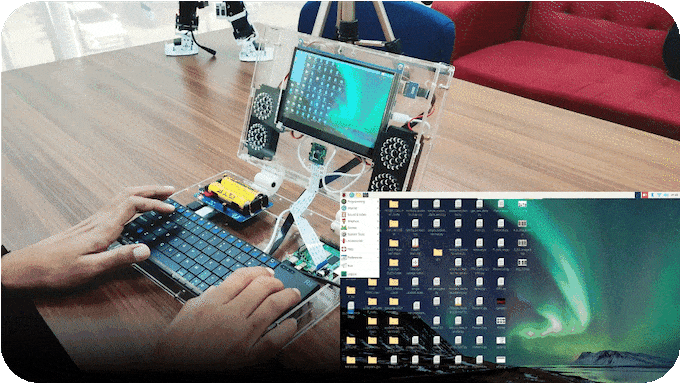LapPi 2.0, a DIY Modular Raspberry Pi Laptop, was released for crowdfunding.
The development of a Raspberry Pi laptop has undergone several tries. From in-house initiatives like the Motorola Atrix Lapdock hack to customized solutions like the CrowPI L and the company's own line of laptops. The most recent Kickstarter for LapPi 2.0 by SB Components, the next company to try its hand at building a Raspberry Pi laptop, recently went live.
The LapPi 2.0 kit consists of separate acrylic pieces that may be found in five different colors and is put together using machine screws. The package includes a Raspberry Pi 4 if you make a larger commitment in addition to everything you need to create LapPi. A pre-built model, ready for your subsequent project, is also available for a little bit extra money.
A 7-inch IPS monitor with a 1024 x 600 resolution is housed under the lid and is linked to the Raspberry Pi via HDMI. The screen features a five-point touch capability and two speakers on either side of the screen are used for audio output. The official Raspberry Pi camera, namely the Pi NOIR camera with a Sony IMX219 8-megapixel camera, is located just beneath the screen. It can capture video at 1080p30 or 720p60, despite not being the official Raspberry Pi HQ camera. It's important to notice that the camera lacks a microphone.
Our Raspberry Pi 4 is located at the base, in the back right corner. The USB and Ethernet connectors are accessible through this, and it also directs access to the HDMI, power, and micro SD card ports within the casing. All Raspberry Pi boards are compatible with LapPi 2.0; all we need are adapters to convert HDMI and electricity for our particular model. Theoretically, this would also render it compatible with further single-board devices, such as the Khadas VIM 4 and Edge 2 Pro.
An extra board in the base's left-rear corner serves as the source of power. The Raspberry Pi 4 is connected to the UPS power board, which seems to be two 18650 Li-ion batteries that supply 5V to the Pi. On the power board, there are two USB connectors, which we think will also power the display. We have a portable power source and a backup power supply in case the power goes out since the 18650 batteries are charged via an external power connection, which also powers the Raspberry Pi.
A Rii Bluetooth keyboard and trackpad serve as both the keyboard and the mouse. This wireless, detachable keyboard allows us room to spread out and work on bigger tasks.
For projects, the open base gives us full access to Raspberry Pi's GPIO. This implies that we can use a lot of the top Raspberry Pi HATs without any problems.
What will the total cost be for you? The base model of the Kickstarter costs £199 ($242 using current exchange rates), and if your pledge amount rises, you'll get added benefits like a Raspberry Pi 4 with between 2 and 8GB of RAM or a completed device.




.png)


















0 Comments